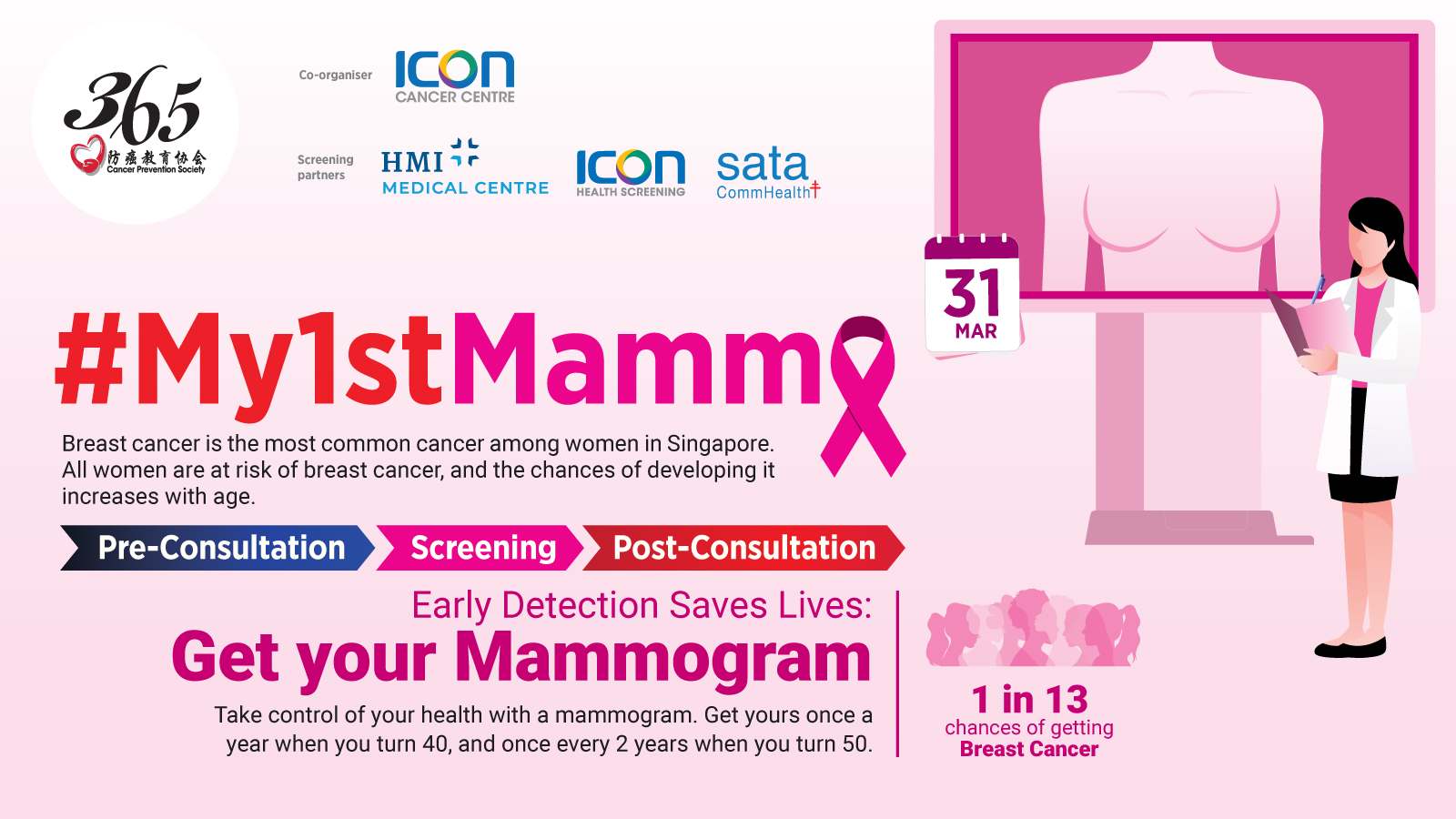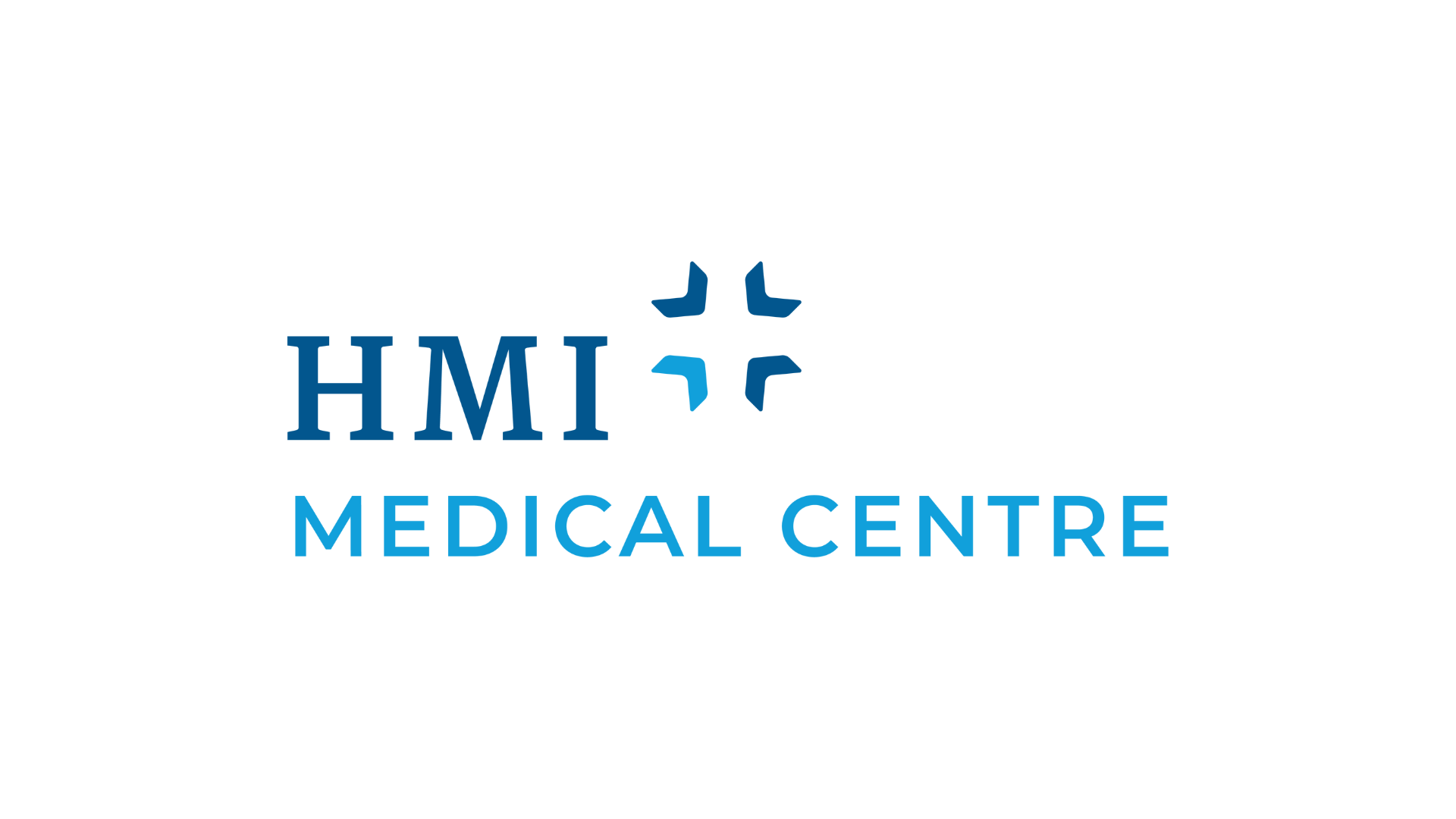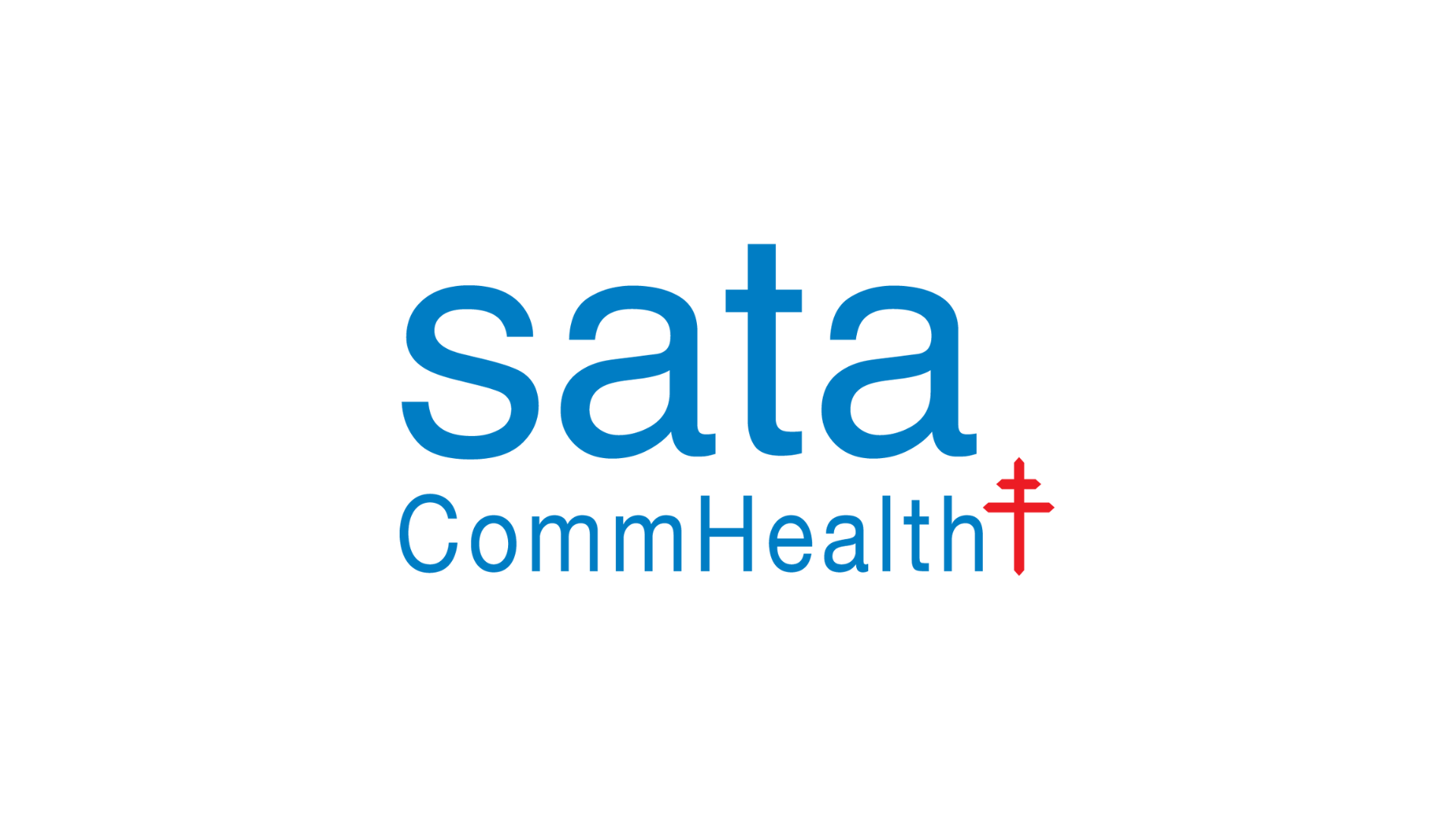Events

Breast cancer is the most common cancer among Singaporean women. Statistically, approximately 1 in 13 women in Singapore will be diagnosed with breast cancer in their lifetime.
Breast cancer is a malignant tumor which occurs when breast cells become abnormal and divide without control or order. The majority of breast cancers start in the milk ducts while a small number of cases start in the milk sacs or lobules. Within these two groups, some grow very slowly while others develop much more rapidly.
Breast cancer can spread to other parts of the body, including the lymph nodes, bones, liver, lungs and sometimes to the brain.
The risk of breast cancer increases with age. Women with risk factors such as a family history of breast cancer should discuss with your doctors when to go for and the interval of regular screening. Women aged
#My1stMammo is a sponsored screening campaign providing free mammograms to low-income individuals aged 40 and above.
Screening Eligibility Criteria:
- Females aged 40 years and above
- Valid blue/orange CHAS card or Public Assistance (PA) card
- Women aged 40-49: Must not have undergone a mammogram within the last 12 months
- Women aged 50 and above: Must not have undergone a mammogram within the last 24 months
- Have not received breast implants
- Is not undergoing breast cancer treatment
Signs and Symptoms
Ductal carcinoma in situ (DCIS) generally does not cause symptoms, and is most commonly discovered in screening mammograms. Occasionally, women with Ductal carcinoma in situ (DCIS) may present with a breast lump or bloody nipple discharge.
Breast cancer is otherwise usually painless and there may be no symptoms in the early phase when breast cancer first develops.
When the cancer grows, signs and symptoms may develop and they can include:
- A persistent lump or thickening in the breast or in the axilla
- A change in the size or shape of the breast
- A change in the colour or appearance of the skin of the breast such as redness, puckering or dimpling
- Bloody discharge from the nipple
- A change in the nipple or areola, such as a persistent rash or nipple retraction (nipple pulled into the breast)
Causes and Risk Factors
Hereditary Breast and Ovarian Cancer (HBOC) syndrome, caused primarily by mutations in the BRCA1 or BRCA2 genes, accounts for approximately 5-10% of all breast cancers. Individuals with these genetic mutations tend to develop cancer at an earlier age than the general population and have an increased risk of developing bilateral breast cancer, developing a second primary cancer in a different organ, and experiencing cancer recurrence. Other less frequent genetic mutations can also increase the risk of breast and other cancers.
Hereditary Breast and Ovarian Cancer (HBOC) is an adult-onset, cancer predisposition syndrome which can be passed down through generations. A family history of cancer can provide clues about the potential presence of HBOC within a family. The risk of HBOC may be higher if your family history includes one or more of the following features:
- Onset of breast cancer at a young age
- Bilateral breast cancer or personal history of multiple cancers
- Family history of ovarian, peritoneal, fallopian tube, pancreatic cancers and/or melanoma
- History of male breast cancer in the family
Genetic testing for Hereditary Breast and Ovarian Cancer (HBOC) syndrome can be done through a blood test when specific criteria are met. However, genetic testing is complex, thus it requires genetic counselling and informed consent before taking place.
How to Prevent Breast Cancer
There is no sure way to prevent breast cancer, but the risks can be lowered. You may modify the risk factors which you have control over, such as:
- Exercise and increase physical activity
- Limit alcohol consumption
- Keep to a healthy diet to prevent obesity, especially post-menopause
- Stop smoking
- Limit the use of Hormone Replacement Therapy (HRT) and Oral Contraceptive Pills (OCP)
- Limit exposure to environmental pollution and radiation such as the use of medical imaging like Computerised Tomography (CT) scans unless really necessary
- Have more children if one is able to
- Breastfeeding is also protective
What is a Mammogram
Mammography is am X-ray imaging technique that produces detailed images of the breast tissue. During a screening mammogram, the breast is gently compressed between two plates while X-ray images are taken from different angles, typically including a top-to-bottom view and a diagonal view.
Additional angels and views, including magnified images, may be acquired if necessary to further investigate areas of concern. Mammography can help to detect the presence and location of abnormalities within the breast tissue, aiding in the diagnosis of breast conditions, including cancer.
The risk of developing breast cancer increases with age. While regular mammograms are recommended for most women, women with increased risk factors, such as a family history of breast cancer, should consult with their doctors to determine the most appropriate screening schedule. This may include more frequent mammograms or starting screening at an earlier age.
In addition to mammograms, other imaging techniques such as breast ultrasound, tomosynthesis (3D mammography) and MRI may be utilised for breast assessment. However, these are typically not used for routine screening in women that are well. They are often used for further evaluation after an initial screening mammogram or for women with a higher risk of breast cancer.
How to perform a Breast Self Examination
A Breast Self Examination is recommended once a month about 1 week from the day of your menstrual period. For women who no longer menstruate, choosing a date each month is an easy way to remember. Report to the doctor if you observe any breast changes such as redness, swelling, presence of a lump, skin changes or discharge from the nipple.
Self awareness of any breast changes through regular Breast Self Examination and being familiar with what is normal and stable is useful to detect abnormalities.
Breast Self Examination:
| 1 | Look for changes in front of a mirror |
|
| 2 | Feel for the changes lying down |
|
| 3 | Look for bleeding or discharge from the nipple |
|
| 4 | Repeat steps 2 and 3 for the left breast |
Screening Process
| 1. | Register with 365CPS |
Click on the “Register” button, complete and submit the online registration form. Upon submission, our staff will respond to you in 5 working days. Eligible individuals will receive a Confirmation Letter endorsed by 365CPS. |
| 2. | Schedule an appointment |
Once you receive the Confirmation Letter endorsed by 365CPS, kindly contact the selected clinic directly to schedule an appointment. Kindly bring along your NRIC and Confirmation Letter for your appointment. |
| 3. | Mammogram | The appointment will involve a consultation with a doctor, followed by a mammogram to detect breast cancer. |
| 4. | Review | Should your results indicate any abnormalities, a post-screening consultation will be arranged and a referral letter will be issued to refer you to a public health setting for further investigations if necessary. |


